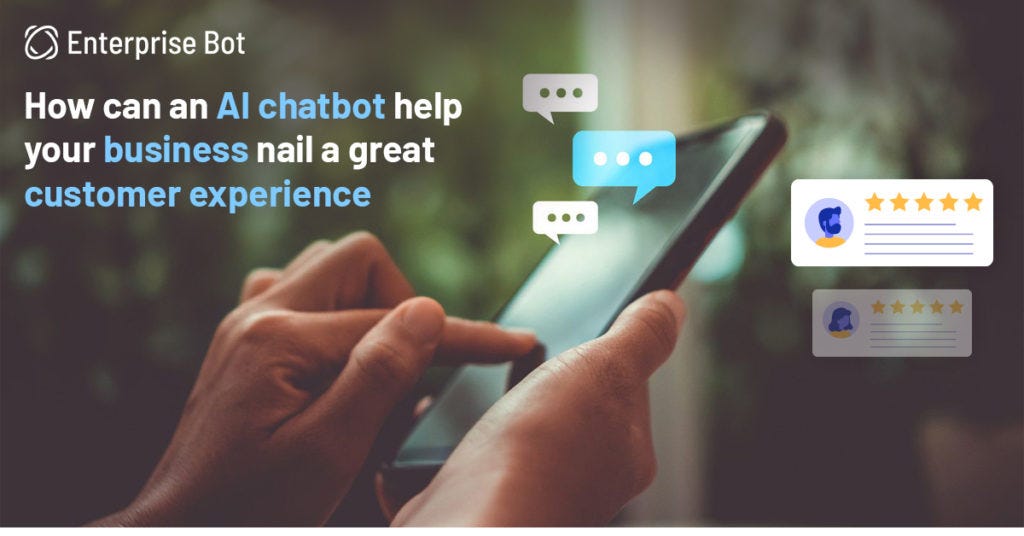 |
submitted by /u/Veerans [link] [comments] |
Author: Franz Malten Buemann
-
The Evolution of Chatbots to Conversational AI
-
Need help understanding Azure pricing
Hello. I’m trying to create a chatbot using microsoft bot framework and I saw on tutorials that I can use Azure for free. I’ve been browsing my user pannel when I came across subscriptions pricing and there are already costs of 40€+ . How real are those cost? Can I continue with my project? Will those billing be applied to me if I used a Revolut virtual card that i deleted?
submitted by /u/MightyHarciog
[link] [comments] -
5 Common Chatbot Myths Explained

Chatbots are the talk of the town. They’re one of the hottest topics in the technology world today.
Like any new technology, much of the fact and fiction gets jumbled up. This leads to a number of myths and misconceptions that sway popular opinion, particularly among decision makers.
We set the record straight on 5 of the most common myths about chatbots so you can be confident of deploying one in your business today.
Myth #1: Implementing a chatbot requires too much time and resource
A common misconception is that implementing a chatbot requires the availability of a large IT department and highly qualified AI & machine learning experts, solution architects, and data scientists on the company’s side.
And this is true… if you are custom building your own chatbot (more on this later).
If you partner with a solution provider who knows their stuff, implementing a chatbot actually requires minimal time and resources, and can be easily deployed in a matter of weeks.

Here’s some proof:
Noel Leeming, New Zealand’s largest electronics retailer, implemented their web-based chatbot in the middle of the 2020 COVID-19 pandemic in just 12 days.
That’s right — a fully functioning AI-powered chatbot with integrations into existing business systems in less than two weeks.
Advanced solution providers essentially provide a platform that has everything set up and ready to go.
Most of what is required during the implementation is the configuration of the conversations to match the decided use case(s). There is very little to no coding effort required, meaning IT and development resources are minimal.
Easy to use, intuitive tools (think ‘drag and drop’ style functionality) make it easy for users to design, build and test conversations quickly. Teams can move fast to get their chatbot up and running without any technical expertise.
The key is also to start with a single use case, get your chatbot live, collect data, and iterate as you go (we’ll touch on this in more detail a bit later).
Myth #2: It’s better to build your own chatbot than to buy
Aside from the exorbitant costs associated with building from scratch, here’s why a platform is your best bet.
a) Custom-built solutions are slow to develop and deploy
Just thinking of what goes into it is exhausting — trust us, we know. A platform is cost-effective and faster to deploy. Low code platforms, like Ambit, require minimal development and allow you to implement a fully functioning chatbot quickly, that delivers better bang for your buck, and accelerated time-to-value.b) Custom-built chatbots require ongoing resources, time and money
It’s not just the initial build you have to think about. Don’t forget the requirements to maintain and improve the platform, minimise technical debt, fix bugs, run QA and testing, and ensure it scales with your business. A solution provider will take care of this for you.c) Specialised components
Then there are the specialised components that go into developing a platform from the ground up. This is often overlooked by businesses that choose to build.Capabilities such as artificial intelligence, machine learning algorithms, Natural Language Processing/Understanding, neural linguistics, integrations with key business systems, the list goes on. Acquiring the knowledge and skills to develop these is expensive and time-consuming. A platform has these capabilities built-in already.
d) Constant improvements
A best-in-class platform constantly improves over time — and not at your own expense.Access to new features at a regular cadence based on extensive R&D is guaranteed. This free’s your team up to focus on other projects. All the technical aspects are looked after for you (you’re welcome), and you also get access to an industry-leading team of product specialists who are responsible for ensuring you get the most out of the solution as your business grows.
Unless you have time, skills and cash to burn to build a custom chatbot, a best-in-class platform will return a better ROI every single time. It’s like ERP systems; sooner rather than later, those who build their own end up crawling back to a best-of-breed solution. Save yourself the headaches!
Trending Bot Articles:
3. Concierge Bot: Handle Multiple Chatbots from One Chat Screen
Myth #3: Chatbots don’t generate a return on investment
This is the biggest misconception of all.
Any lapse in ROI is often down to how the technology has been implemented, rather than the limitations of the technology itself.
Businesses that utilise the technology to its full potential are generating incredible returns. Here are a few examples:
- Chatbots generates 2.2X more ecommerce upsells
- Chatbots can cut customer service costs by 30%
- Noel Leeming sees 16X ROI from their chatbot, Nola
- Vector’s chatbot deflects ~2,000 customer service calls per month
- Retailer drops cost to serve to $0.47
And there are so many more (if you need further proof, let’s chat).
So how do businesses ensure their chatbot generates a return on investment?
One of the mistakes businesses make when implementing a chatbot is they clamber anything and everything in at the beginning of the project. They pour time and money into developing the ‘perfect’ chatbot that can do everything under the sun, before setting it live and forgetting about it.
This approach is slow, neglectful, and costly.
It’s important to start small, get your chatbot up early, gather & analyse user data, learn fast, and iterate on the fly.
Why? Rather than sinking time into building the entire chat experience up front and making a host of assumptions, your chatbot is live faster, shortening the time-to-value, and uses data to drive decision making on the areas your chatbot should develop next. ROI continues to rise as your chatbots’ skill set develops over time.
Conversation design also plays an important role in the value a consumer and business receives from its chatbot.
What use cases does your chatbot specialise in, how are its conversations designed, how deep do they go, do they exist to support existing customers or convert new customers? Do they align with your use case and goals? The list goes on.
It’s a specialised skill to design chatbot conversations that achieve businesses goals and expectations. That’s why we at Ambit have a dedicated team of experts to advise our customers on designing conversations that drive a measurable return on investment.
Note: If you’d like to know what goes into creating great digital conversations let us know, we’d be happy to share our experiences, or download our Conversation Design eBook here.
Myth #4: The technology isn’t up to scratch
Like any new innovation, it’s fair to say the early instances of chatbots left a lot to be desired.
As developers and businesses navigated this new technology, consumers were often left with underwhelming experiences, and businesses looking to point the blame.
Much of this is historical and not a reflection on the quality standards of modern chatbots. It also comes down to the use cases and expectations decided by the business, and how the technology is utilised to deliver on these.
Through AI and machine learning, chatbots have evolved exponentially since their inception. Today they’re smarter than ever, more refined, and able to provide value to an array of use cases on demand.
Sophisticated data processing means today’s chatbots are more accurate and reliable, learning from each and every interaction to grow their capabilities faster.
The most advanced chatbots utilise NLP/NLU to better interpret and understand the way humans speak (let’s face it, even us humans have trouble understanding each other at times!).
Today’s chatbots understand the complex nuances of human language, such as tone, sentiment, context, and intent to respond appropriately, solve more intricate enquiries, and provide better customer experiences.
Note: We wrote an eBook on the different types of chatbots available, from simple FAQ bots to AI-powered Digital Employees. You can find out which type of chatbot suits your business here.
Myth #5: Chatbots prevent access to human agents
The last myth is that by using chatbots, consumers no longer have access to human agents.
By integrating a chatbot with a live chat system businesses provide a fully seamless handover from chatbot to a human when the situation requires it. This also extends to email support and call-back functions.
Many chatbots utilise AI and machine learning technology. They’re smart enough to detect enquiries that are more complicated and best solved with human interaction.
The chatbot calls on a human agent standing by to take over the conversation and provides them with all the context and information gathered. This brings the human agent up to speed on the enquiry immediately, enabling them to assist in real-time.
Chatbots exist to augment humans, not displace them. By taking care of high volume routine tasks, they free up human agents to focus on higher priorities to add more value. Working hand-in-hand they are the perfect combination to deliver customer service at scale.
So there you have it — the truth about chatbots
Their popularity as a customer service solution has grown exponentially — and there’s good reason for it.
By automating customer conversations, chatbots have proven themselves to free up human agents to be more productive, reduce support costs, and act as an additional channel to increase sales.
Of course, if you need further proof, we’re only a conversation away.
Don’t forget to give us your 👏 !

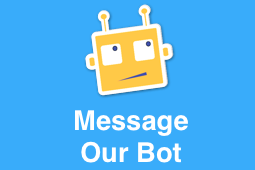
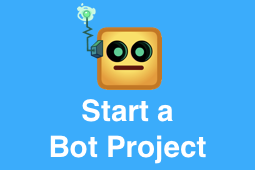
5 Common Chatbot Myths Explained was originally published in Chatbots Life on Medium, where people are continuing the conversation by highlighting and responding to this story.
-
3 Steps: Register Oracle Digital Assistant in Botium Box
This article shows how to setup an Oracle Digital Assistant (ODA) chatbot in Botium Box.
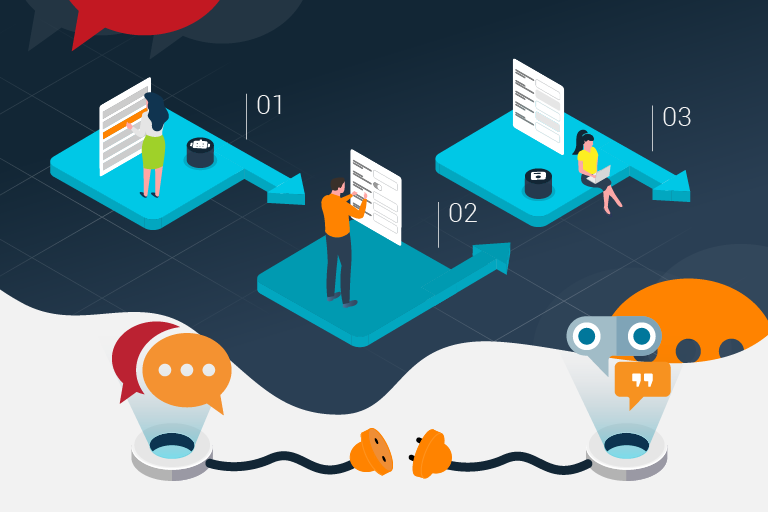
What you need is an ODA chatbot in oracle cloud and a Botium Box license. To keep it simple I’ve just pulled some kind of a pizza order skill from the store on ODA surface, so now I have a working bot.
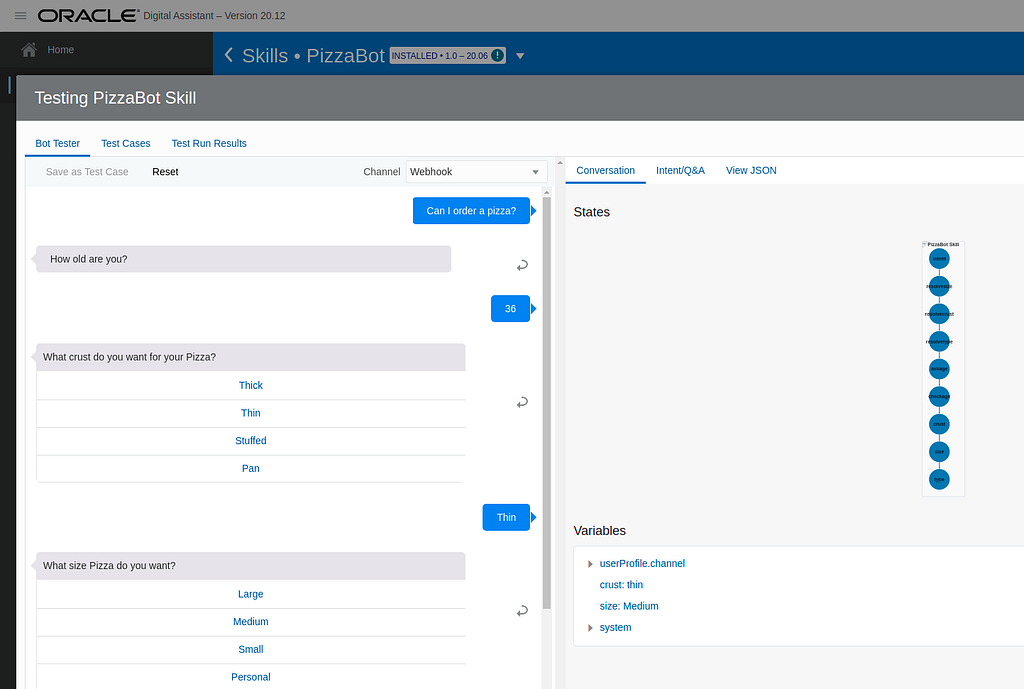
Step 1: Set up an Oracle Digital Assistant connector in Botium Box
Under the Chatbots list click on the Register new chatbot button.

Select the Oracle Digital Assistant from the Connector list. Then choose an appropriate API key in the API key drop down. Now the Oracle Outgoing Webhook URI is generated, which you can copy to the clipboard by clicking on the copy button near the input field.

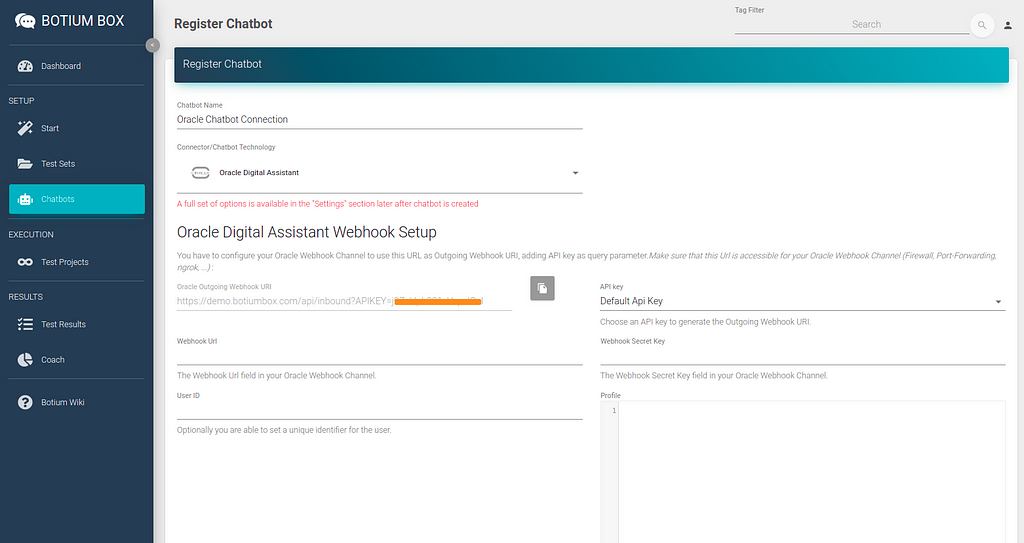
Step 2: Create a channel in Oracle Digital Assistant
Navigate to your ODA surface and add a new channel. Choose the Webhook as Channel type. Paste the value you copied in the previous step into the Outgoing Webhook URI field.
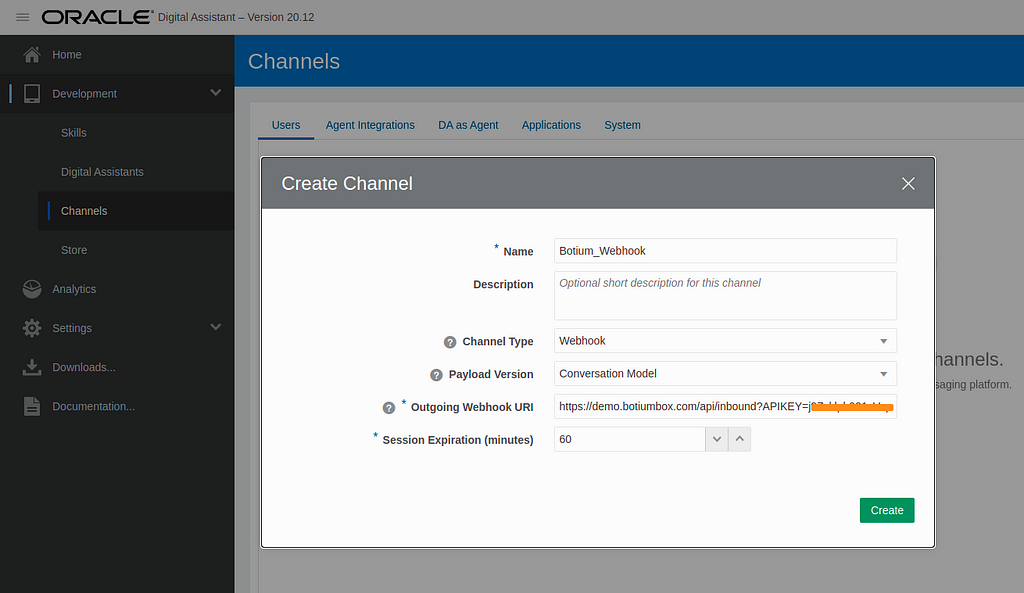
After you’ve created the channel, you will get a Secret Key and a Webhook URL. These values have to be copied into the ODA connector in Botium Box.
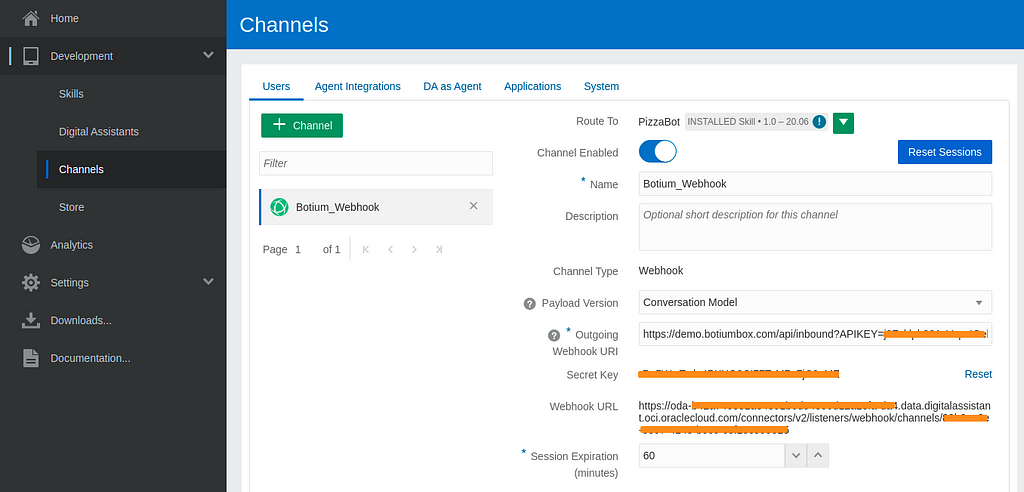
Don’t forget to select your bot in the Route to field, and enable your channel clicking on the Channel Enabled field.
Trending Bot Articles:
3. Concierge Bot: Handle Multiple Chatbots from One Chat Screen
Step 3: Final steps on Oracle Digital Assistant connector
Go back to the Botium Box and finish the ODA registration. The Secret Key and Webhook URL has to be pasted into the corresponding fields. Then optionally you can set up a user ID and/or a user profile.
If all the values are fine, then save the connector.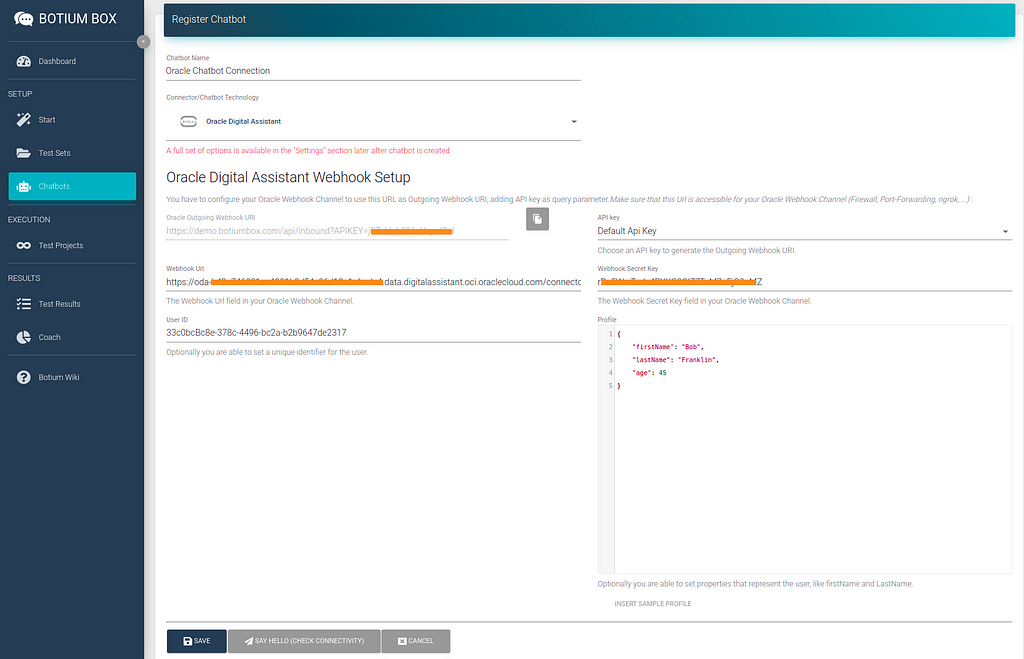
Finally check if everything is working correctly
After saving the connector you can see your ODA connector in the Chatbots list. To make a conversation with your bot open your connector and click on the Live chat button on the Dashboard tab.

On this surface you can chat real time with your bot. Clicking on the Save test case button you are able to create your first test set to your ODA bot, based on your live chat conversation.
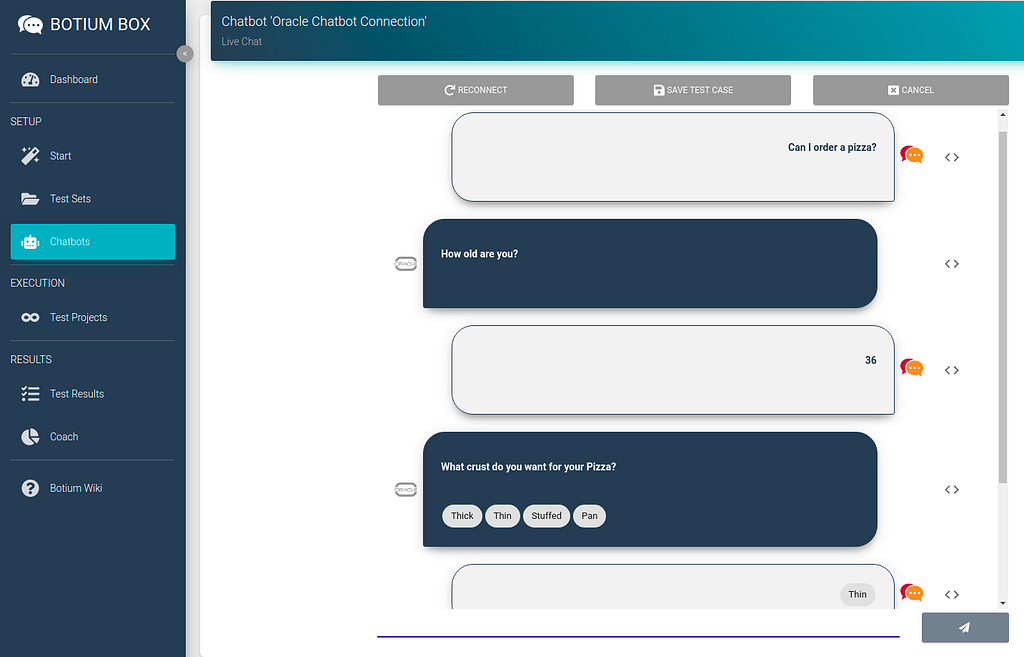
Get the Right Tools In Place
Without the right tools you will be lost. With Botium Box you are prepared for the challenges of getting them in place and integrate them into your chatbot development lifecycle.
Don’t forget to give us your 👏 !



3 Steps: Register Oracle Digital Assistant in Botium Box was originally published in Chatbots Life on Medium, where people are continuing the conversation by highlighting and responding to this story.
-
How can an AI chatbot help your business nail a great customer experience
As one of the key trends in innovation, Artificial Intelligence (AI) keeps on acquiring value for contact center agents. Chatbots and…
-
4 great examples of no-code success
No-code is a growing trend in business, empowering anyone in a company to develop a solution to a problem or build a service that can benefit clients and customers. The marketing spiel out the way, from chatbots to process automation, how successful can a no-code solution be? How much power can one individual wield in the digital business era?
The age-old argument is there are never enough coders to go around. So, the companies that provide traditional solutions have made them customizable, be it through macros or WYSIWYG design features. Then there is the low-code movement that helps developers create prototypes quickly to speed up the design and implementation phase. You can find low-code solutions buried among the mass of Salesforce and Microsoft products, all trying to make their leviathan solutions easier for end-customers to use.
But there is still a massive number of actual users within a company; professionals, knowledge workers, creators and tinkerers who want a better way to do something. That might be to automate a repetitive task, link several data sources together to create something that adds insight or value to the business, or to create a whole new product.
Whatever the motivation, no-code tools allow anyone to build these solutions, and here are five examples that show what is possible, and what the rewards are.
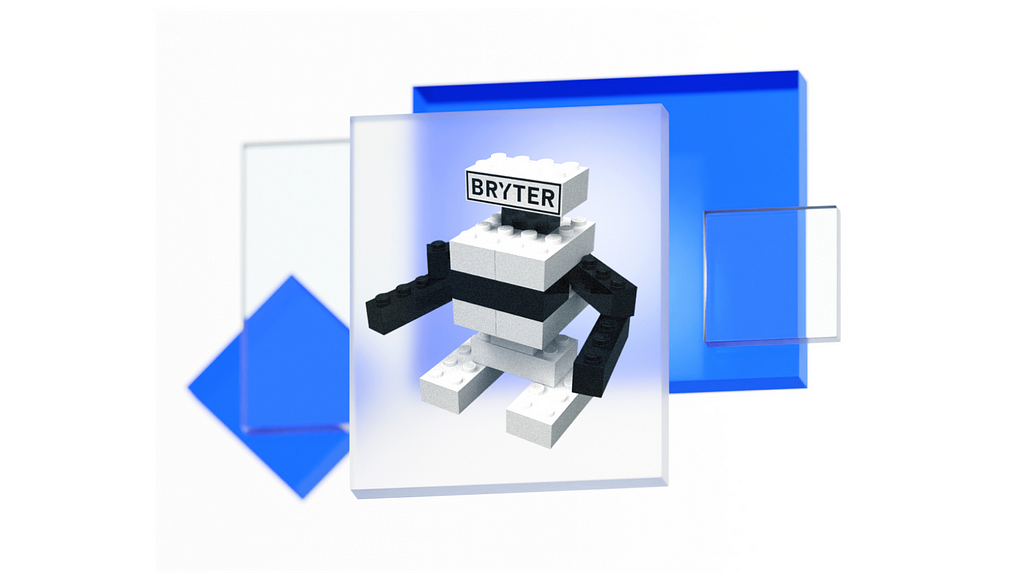
BRYTER moving beyond legal tech
German firm BRYTER recently launched in the US and is rapidly moving beyond its legal tech origins to offer an extremely powerful no-code solution. The firm just announced a $66million funding round for its US expansion, with CEO Michael Grupp highlighting the success of no-code, saying:
“It was a great year for low-code and no-code platforms, what everyone has realized is that most people don’t actually care about the tech. They only care about the use cases. They want to get things done.”
BRYTER’s customers include McDonald’s, Telefónica, PwC, KPMG and Deloitte in Europe, as well as banks, healthcare and industrial enterprises, providing chatbots, legal automation and productivity-boosting services. One example is the German employment law firm KLIEMT.HR where lawyers used BRYTER technology to transform its market presence both internally and externally.
“Using BRYTER technology, we conducted the firm’s first-ever legal hackathon in April 2019. Attorneys, armed with only basic knowledge of the system, learned to set up employment law-related tools in a matter of hours that would allow clients to perform legal compliance checks. The experience was exciting for the whole firm and our clients will be able to receive guidance on many commonly occurring questions wherever they are, whenever they need it, without having to consult a lawyer.”

No-code builds entire businesses
While some users look for point solutions or a grand-slam app, others are building whole companies using no-code. Noel, the founder of Nocode HQ cites how his failures when learning to code drove him to no-code, which he used to create a raft of business ideas.
Similarly, Brent Liang likes to tell the story of how he built two companies, hit $40k MRR, and pitched to Bill Clinton without writing a line of code. There are millions of entrepreneurs out there who won’t have the backing or funds to invest in a coding team but do have the time to build their dreams with no-code.
No-code brings those ideas to life, they help create prototypes that investors prefer to an idea on a piece of paper. They also help firms get going without needing to staff up or outsource their efforts into the hands of unknown quantities.
Trending Bot Articles:
3. Concierge Bot: Handle Multiple Chatbots from One Chat Screen
Even large firms struggle for coding skills
While startups can be excused for not having access to coders, there are many quite large firms where coders’ time is a highly valuable commodity. Take German insurance firm R+V Versicherung who were getting complaints from sales staff about the length of time, up to five weeks, that adding new customers to their system took.
Building the no-code solution using tools from the Israeli firm EasySend took some effort due to the complexity involved. IT monitored the project to ensure that the cloud-based, external application could be integrated into the company’s IT infrastructure, highlighting the need for no-code to work well with app aspects of a company’s IT. Now it is running that five-week job is down to 30 minutes!
The power of the five-minute app
These examples are largely useful for companies, but there are plenty of no-code tools that anyone can use to build all sorts of applications. Take Glide, the “Build an app from a Google Sheet in five minutes, for free” tool.
While big names like NASA and Zoom appear on Glide’s list of customers large numbers of individuals use it to create all sorts of apps including popular example, Buster Benson’s Pocket Biases, an app that helps explain the many cognitive biases we face as we make daily decisions.
The ability to build apps outside the typical business use case will be vital for the next generation of ideas people, entrepreneurs and thought leaders, with no-code helping them move faster than their predecessors could ever have imagined.
Don’t forget to give us your 👏 !



4 great examples of no-code success was originally published in Chatbots Life on Medium, where people are continuing the conversation by highlighting and responding to this story.
-
How can Voice-Based Conversational AI Help you Improve your Business?

Voice-based Conversational AI Business is a complex entity. You exactly need to know about the components on which business actually works. Business is built upon the strong foundation of internal elements, external elements, operational structure, and intangible things. Among these four components, you can introduce your Voice-Based Conversational AI. Keep on reading to know more about these components and Voice-Based Conversational AI.
Internal elements: internal elements of business include the values and principal of the business. You need to have a goal and vision to give direction to your business. To achieve those goals you must make a proper plan and strategies. Plans should be always monitored and decisions should be made accordingly. Metrics and measurements, risk prioritization, and governance are some other factors that you should be aware of during running a business.
Things you must know about a business before introducing Voice-based conversational AI in business
External elements: external elements are those things for which business works or the elements which support your business. Customers and community are factors for which a business works and they ultimately decide the progress of your business. Other factors that will help you to grow your business are regulators, partners, and government. If you maintain good relationships with these two internal factors you can surely grow your business. Another external element is competitors if you have good competition you will naturally try to grow better.

Operational structure: the operational structure is related to the resources and modification sector of your business. The operational structure is vital in order to grow your business. The operational structure generally includes departments, processes, capabilities, software applications, data computing, hardware, time, money, people, capital, training, products, channels, facilities, and supplies.
Intangible elements: intangible elements include your values towards business. Intangible things include your character, personality, leadership, your aim, and approach towards business. It may be underrated but it is the most important aspect in order to complete your journey from potential to performance, from good to better and best.
If you improve all these things you can grow your business and if you introduce Voice-Based Conversational AI then the rate of growth will increase. Let us know more about Voice-Based Conversational AI and how to introduce it in your business elements discussed above.
Trending Bot Articles:
3. Concierge Bot: Handle Multiple Chatbots from One Chat Screen
When to introduce AI to your business
In the upcoming 10 years, Conversational AI will be well developed with new modifications. Artificial Intelligence can be introduced at any stage in large-scale business as work is more and AI can work efficiently. But when it comes to small-scale business you have to be particular about AI in your business.
There are basically four structures to introduce conversational AI
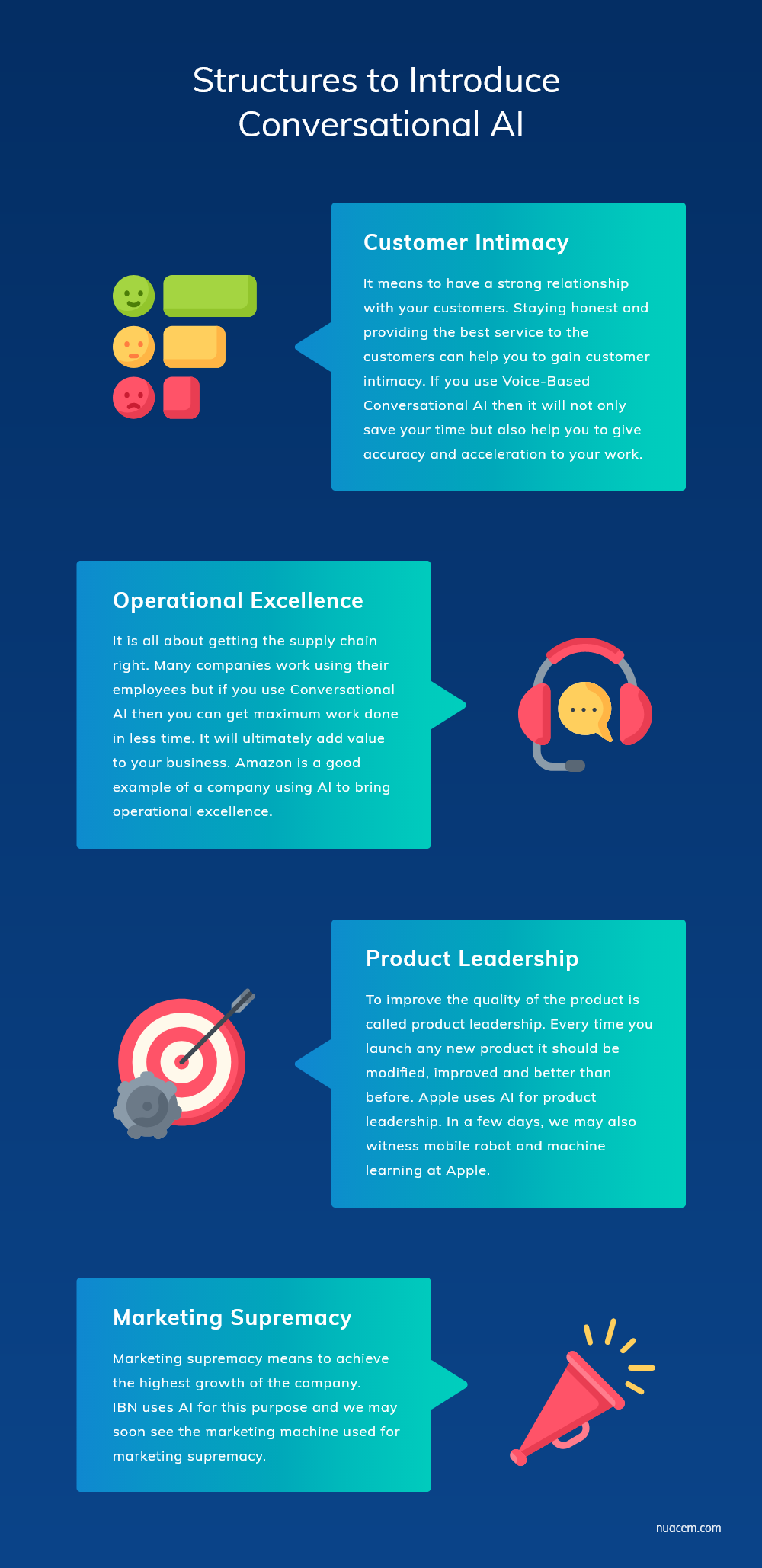
The path that voice-enabled technology will lead you
Human-machine relation is the result of the ultimate democratic of information. Humans are surrounded and connected with technology. Listening to music, ordering market things, booking cabs are all examples of human-machine relations. Now we introduced conversation voice-based AI to make life easy for humans.
Voice-based conversational AI’s original utility was music ID-based on the DNA of music so that you can hold it up to your TV or stereo speakers and it will listen and identify the music.
Conversational AI is a mechanism to deliver a different experience to the innovations that are happening right now related to content discovery to take away a lot of difficulties in technology for customers. For example, you can just ask your device to search a song or a movie and the device will play it for you. In the same way, you can also book a cab or search for anything using the Conversational AI Platform.
Conversational AI gives you the liberty to pull a piece of information you want very comfortably. AI uses speech learning technology to become more accurate, fast, and less prone to error. Speech meaning technology is explained as the use of meaning as a transcript of the text.
AI uses its quality and functionality to a bunch of different things like car operations, journalism. AI is based on the evolution of naturalism. Voice is the natural form, we mostly use texts to type, but typing is not our natural form. Voice is the new mechanism of technology that helps us to take advantage of devices in our daily lives.
Technology grows with time, it just gets better and better day by day. Trends in technology just change on an almost daily basis. Nowadays on an hourly basis, we get an update. Business experts and CEOs find it difficult to meet up with technological trends. This is why AI was introduced. AI is the latest trend in technology which has its own intelligence so it will research and sort all the latest trends.
Merits and demerits of conversational AI
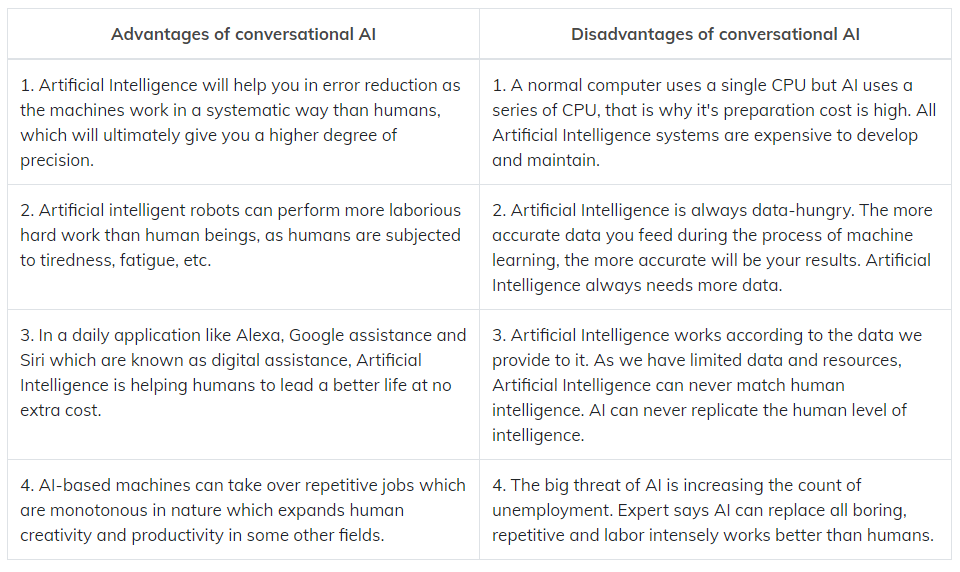
Merits and demerits of conversational AI 4 ways in which AI will change your life
As compared to the previous years we have a lot more power in our pockets. We use AIs knowingly or unknowingly way too often. Shopping, booking hotels, rooms, travel tickets, movie tickets, etc can be done with the help of AI. Here are some more classified things we do daily using AI.
Automated transportation:
The Latest AI technology allows you to operate your car remotely. You can turn on AC, open the sunroof of your car, play music, and do many more things using conversational AI. An example of AI in automated transport is a newly launched MG vector car. AI also has the power to operate the car remotely. You can park your car on the top floor of the building. The work of a fully automated car is also in progress. This AI will surely help you to transport things better than humans. Also, the concept of drones for delivering food is on the threshold to be implemented in many food companies and restaurants.
Basically, the implementation of AI is going to take transportation to the next level.Cyborg Technology:
Humans are more likely to make mistakes, and so AI can easily take over humans in many aspects. As human beings, we all have limitations, we get distracted, tired, and can be casual at times. AI can perform way more effectively. AI is now introduced in many industries, banks, offices, and even hospitals. The scope for AI is getting increased day by day. AI is used in hospitals and soon we can see a mobile robot taking charge. Banks use conversational AI to introduce their latest interest rates and saving offers.
Taking over a hazardous job:
In the field of construction, we have to undergo some risky tasks. Let us consider if you have to dig a tunnel through a mountain. If we use human power we may require a lot of labor, the time requires to complete the task will be more, and you have to pay each of them individually. If you replace humans with AI and carry out the same task, then you can do work in a quicker time, you may not need to pay a lot of people, and also machines can work more effectively for a longer time.
Also, let us consider a worst-case scenario If a mountain collapses or landslides take place God forbid, then human life can be damaged in hundreds. Instead, if you use AI for the same task damage caused can only be materialistic. Machines in civil engineering have great value in their work. It adds more protection, more accuracy, and literally speeds up the work for the project manager.
Climate change:
problems related to climate change can be handled well by AI. It can be more accurate so that it will help farmers and also many travel agency to plan their trips according to the weather. It will also help many restaurants and small and medium businesses to plan their menus according to the weather. Climate change prediction is also very important in sports events. AI all together provides good and better climate prediction to make life better.
AI if introduced in the climate changing, will inform you about the climate daily and what type of things you must follow for that suitable climate. How many times have we took an umbrella and it didn’t rain at all and the day we decide not to carry an umbrella with us it rained and ruined your day heavily. To avoid such things AI in climate-changing it’s a very useful concept.
Final words
Conversational AI which is voice-based is a great concept. It will help humans to grow and achieve various levels of development. AI can manage all tasks and humans can invest their time in improving and dealing with other intellectual problems.
In the future, AI will be a great partner for humans. It will never be humans against AI but always humans and AI working together for the betterment of human life and the world. Let us know about your experience with Artificial Intelligence and how it was helpful for you. Also, you can ask various questions related to AI and we will bring satisfactory answers to go all your questions.
Don’t forget to give us your 👏 !



How can Voice-Based Conversational AI Help you Improve your Business? was originally published in Chatbots Life on Medium, where people are continuing the conversation by highlighting and responding to this story.
-
Building Machine Learning Chatbots

submitted by /u/Joggyjagz
[link] [comments]


